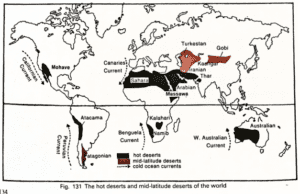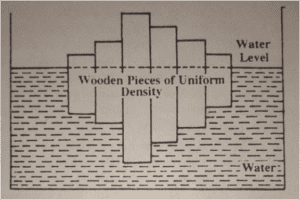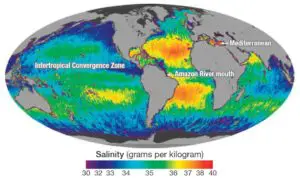As a teacher, it is essential to provide a comprehensive understanding of Roman geographers’ contributions to the field of geography during the Roman Empire. Despite the prevalent perception that the Romans did not make significant contributions to geography, the work of several prominent individuals, including Marcus Terentius Varro, Strabo, and Ptolemy, marks an important milestone in the development of geographical thought and practice.
One of the key features of Roman geographers’ work was their focus on historical and regional geography, mapping, surveying, and the description of natural features and human settlements. Let’s discuss each of these contributions in detail.
Significance of Roman Geographers’ Work:
The contributions of Roman geographers had a significant impact on the development of geographical knowledge and understanding during the ancient era. Strabo, for example, provided an encyclopedic assessment of the known world in his 17-volume work, “Geographia,” encompassing cultural diversity, government forms, and local traditions. His emphasis on political geography and advocacy for a strong central government in political units contributed to the understanding of state structures and governance systems during that era.
Features of Roman Geographers’ Work:
The work of Roman geographers involved a combination of historical, mathematical, and literary approaches to geographical study. Strabo and Ptolemy, in particular, used historical traditions and mathematical measurements to describe various parts of the world accurately. Ptolemy’s use of a projection that displayed latitude and longitude graticules in map-making enhanced the clarity and accuracy of maps during that time.
Objectives of Roman Geographers’ Work:
The primary objective of Roman geographers was to create a comprehensive understanding of the world known to them at that time. They aimed to document and describe natural features, human settlements, and various cultural traditions, which contributed to the broader understanding of geography and diverse societies across the Roman Empire.
Effects of Roman Geographers’ Work:
The work of Roman geographers had long-lasting effects on the development of geographical thought and practice. Their contributions in map-making and geographical descriptions continued to influence navigators, traders, and scholars for centuries. Ptolemy’s eight-volume “Guide to Geography,” complete with commentaries, tables, and maps, became an essential reference for scholars and navigators.
Pros and Cons of Roman Geographers’ Work:
While the contributions of Roman geographers have had a lasting impact on geographical knowledge, there were limitations to their work as well. For example, Ptolemy made mistakes in his longitude calculations and estimations of the Earth’s extent, leading to inaccuracies in his geographical descriptions. However, these limitations also provided opportunities for future scholars to understand and rectify such errors, contributing to the advancement of geographical knowledge.
Fun Fact: Despite the prevalent belief that the Romans did not make significant contributions to geography, the work of Roman geographers such as Strabo and Ptolemy paved the way for advancements in map-making, geographical descriptions, and mathematical measurements that continue to influence geographical understanding to this day.
In summary, the contributions of Roman geographers were significant in the development of geographical thought and practice. Through their historical, mathematical, and literary approaches to geographical study, they created a comprehensive understanding of the known world during the Roman Empire, leaving a lasting impact on navigators, traders, and scholars for centuries to come.
Mutiple Choice Questions
1. Who was Marcus Terentius Varro and what was his contribution to geography?
a) A Greek scholar who produced a treatise on geography
b) A Roman geographer who proposed a theory about the stages of human culture
c) A Roman emperor who wrote extensively on historical and regional geography
d) An Egyptian mathematician who studied the Earth’s circumference
Answer: b) A Roman geographer who proposed a theory about the stages of human culture. Varro produced a succinct treatise on geography and proposed a theory about the stages of human culture.
2. What defines Strabo’s contribution to geography?
a) He believed that the Earth was a stationary sphere at the Centre of the cosmos
b) He developed a 17-volume work called Geographia that provided an encyclopedic assessment of the known world
c) He was the first person to calculate the Earth’s circumference
d) He was the first person to describe the historical tradition in geography introduced by Greek thinkers
Answer: b) He developed a 17-volume work called Geographia that provided an encyclopedic assessment of the known world. Strabo authored Geographia, a 17-volume work that provided an encyclopedic assessment of the known world, encompassing cultural diversity, government forms, and local traditions.
3. What did Ptolemy contribute to geography?
a) He believed in the literary-historical approach to geographical studies
b) He developed a new mathematical technique for mapping the Earth
c) He attempted to objectively organize and analyze ancient Greek geographical and astronomical notions
d) He was the first person to prove that the Earth was a stationary sphere
Answer: c) He attempted to objectively organize and analyze ancient Greek geographical and astronomical notions. Ptolemy’s work marked a key milestone in the mathematical heritage of ancient geography and he attempted to objectively organize and analyze ancient Greek geographical and astronomical notions.
4. What is the significant advancement in mapping during the Roman era, particularly with Ptolemy’s contributions?
a) Maps were enhanced with greater clarity and accuracy
b) Maps were developed for sea navigation only
c) Maps were used to depict the political boundaries of the Roman Empire
d) Maps were first used to show natural features and human settlements
Answer: a) Maps were enhanced with greater clarity and accuracy. Later, throughout the Roman era, and particularly with Ptolemy’s contributions, maps were enhanced with greater clarity and accuracy, marking a remarkable advancement in the history of geographical comprehension.
Brief Summary | UPSC – IAS
Greek geographical traditions were adopted by ancient Roman geographers, and significant contributions were made in the areas of historical and regional geography, mapping, surveying, and the description of natural features and human settlements. Scholars like Strabo and Ptolemy made important contributions to the field, with Strabo focusing on historical geography and the political aspects of the Roman Empire, and Ptolemy making key advancements in mathematics and map-making. However, there was a divide in geographical studies between those who preferred a mathematical approach and those who focused on a literary-historical approach, resulting in a dualism in geographical thinking.



